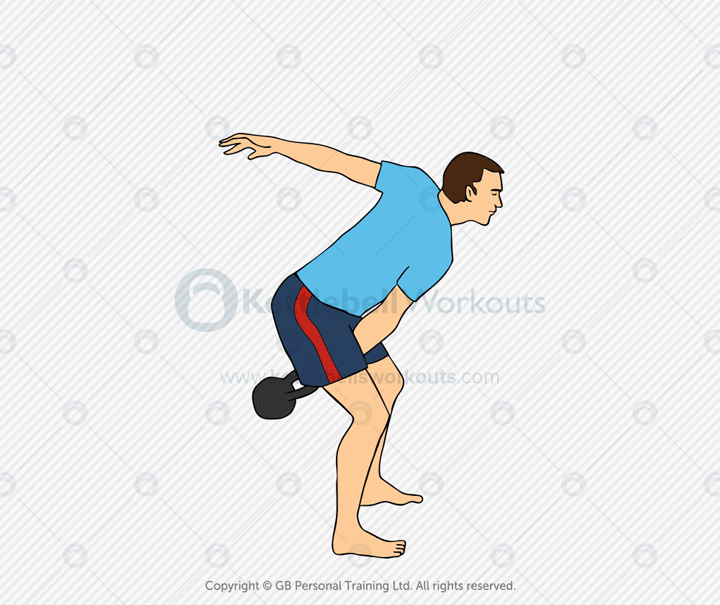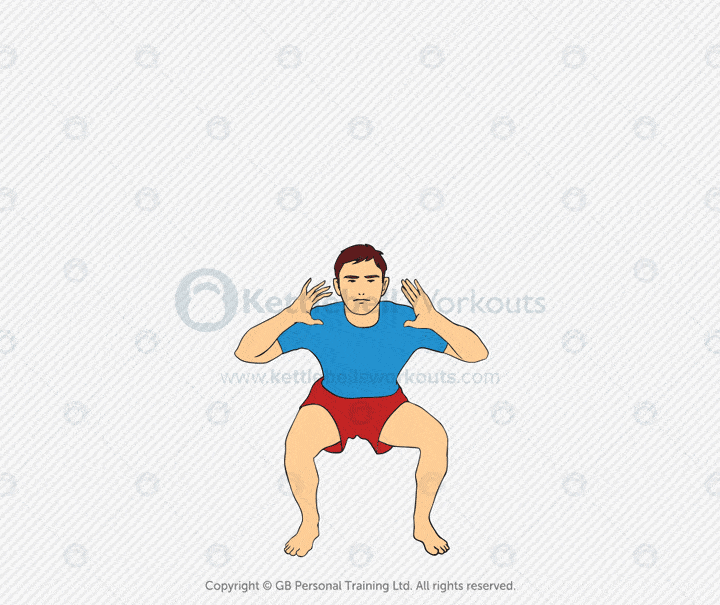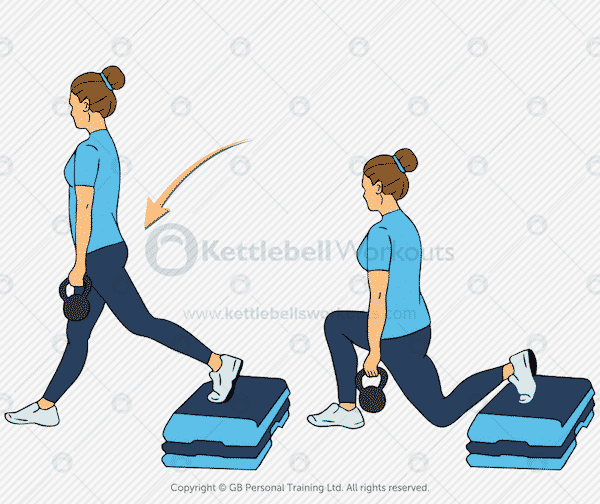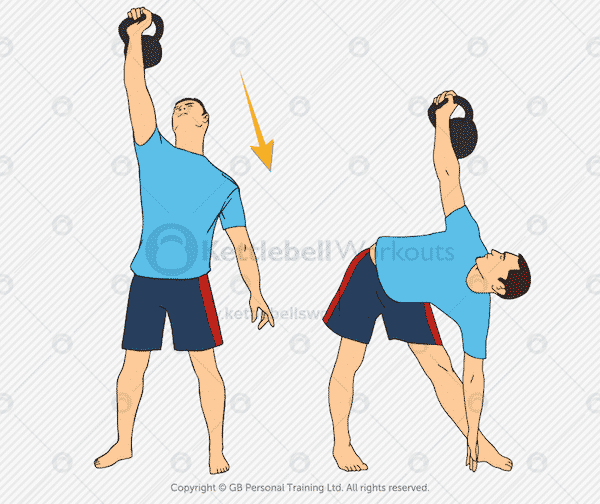Last Updated on 21 July 2025 by Greg Brookes
When most people think of kettlebells, they picture fat loss circuits or full-body strength routines. But if you’re looking to improve your athletic power, the ability to move quickly, explosively, and with control, kettlebells are one of the most effective tools available.
Kettlebell power workouts help you build explosive strength, improve coordination, and teach you to produce force rapidly. Whether you’re an athlete, weekend warrior, or just want to feel more dynamic in daily life, training for power will help you move better and stay resilient.
In this article, I’ll show you how to structure kettlebell power workouts, the best exercises to use, and how to progress safely without risking injury.
Why Train Power with Kettlebells?
Power training is about moving load quickly and efficiently. This builds fast-twitch muscle fibres, improves athletic performance, and helps maintain strength as you age.
Kettlebells are ideal for power work because they:
- Encourage fluid, ballistic movement
- Allow high-rep, low-impact explosive work
- Build grip, core, and hip drive simultaneously
- Improve coordination and timing
Key Kettlebell Power Exercises
When training for power, choose exercises that allow for rapid force production while maintaining control.
Kettlebell Swings
(See full breakdown in: Single-Arm Kettlebell Swing)

- Purpose: Explosive hip power, posterior chain development.
- Tip: Focus on speed from the hips, not height of the bell.
Kettlebell Snatches
(See full breakdown in: Kettlebell Snatch)

- Purpose: Full-body power and coordination.
- Tip: Use a smooth pull and lock out overhead with control.
Kettlebell High Pulls
(See full breakdown in: Kettlebell High Pulls)

- Purpose: Develops shoulder and upper back power while reinforcing hip drive.
- Tip: Pull the bell towards chest height without over-pulling.
Kettlebell Clean to Push Press
(See full breakdown in: Kettlebell Clean and Press)

- Purpose: Combines lower and upper body power in one movement.
- Tip: Use the legs to drive the bell overhead, not just the arms.
Kettlebell Jump Squats (Bodyweight + KB)

- Purpose: Enhances leg power and elasticity.
- Tip: Use a light kettlebell held at chest height; focus on soft landings.
Sample Kettlebell Power Workouts
Here are a few kettlebell power workouts you can try. These routines are designed to build explosive strength without requiring heavy loads, making them perfect for home or gym use.
1. Power EMOM (Every Minute on the Minute)
- Odd Minutes: 10 Kettlebell Swings per side
- Even Minutes: 10 Kettlebell Snatches per side
- Duration: 10-12 minutes.
This workout builds hip power and conditioning in one go. Focus on crisp technique during the swings and maintain rhythm on the snatches without rushing.
2. Power Complex
Perform the following as a continuous flow:
- 5 Kettlebell Swings per side
- 3 Kettlebell High Pulls per side
- 2 Kettlebell Snatches per side
- Rest 60 seconds, repeat 4-5 rounds.
Complexes like this one teach the body to transition smoothly between explosive movements, improving coordination while reinforcing power production.
3. Explosive Strength Circuit
- 5 Kettlebell Jump Squats
- 5 Kettlebell Clean to Push Press per side
- Rest 60-90 seconds, repeat 3-4 rounds.
This circuit focuses on lower and upper body power development. Use light to moderate weights and prioritise speed with control.
Progressing Your Kettlebell Power Training
Progressing with kettlebell power training is about maintaining quality movement while gradually increasing challenge.
- Start with technique first: Focus on crisp, clean movement before worrying about load.
- Increase speed before load: Power is about velocity and precision, not just heavy weights.
- Add volume gradually: Begin with 2-3 rounds and progress to 4-5 as your conditioning improves.
- Incorporate rest: Power training requires adequate recovery between sets to maintain explosiveness. Use 60-90 seconds rest between rounds.
Common Mistakes to Avoid
- Going too heavy too soon: Power requires speed, not grinding lifts.
- Poor movement mechanics: Always prioritise form over force. Sloppy technique reduces the power benefit and increases injury risk.
- Overtraining: Power work is neurologically demanding, limit sessions to 2-3 times per week to allow proper recovery.
Understanding the Risks: Who Should Be Cautious?
Fast, powerful movements can expose flaws in technique or reveal old injuries. Power workouts are not suitable for everyone, especially if you have:
- Underlying joint issues
- Previous shoulder, back, or knee injuries
- Poor movement patterns or mobility restrictions
Explosive training magnifies technical errors. If your swing, clean, or squat isn’t solid, adding speed will only highlight those issues. Always build a foundation of control and stability first.
For beginners or those with a history of injuries, it’s wise to start with basic strength and mobility work before introducing power-focused routines.
Coach’s Insight: Greg’s Take
When I first started focusing on power with kettlebells, I realised how different it feels from strength or endurance training. Power is about intentional speed and crisp movement, not just completing reps.
By adding kettlebell power training into your weekly plan, you’ll move faster, feel more athletic, and keep your nervous system sharp as you age.
Final Thoughts
Kettlebell power workouts are one of the most effective ways to build athleticism and explosive strength. They train your hips, core, and upper body to work together dynamically, helping you move better in sport and life.
If you’re ready to feel faster, stronger, and more powerful, start integrating these workouts into your routine today.
Power training is part of a balanced kettlebell program. See how different goals fit together here.
Frequently Asked Questions
2-3 times per week is ideal, leaving rest days between sessions.
Yes, but start with light loads, focus on technique, and ensure you have a solid foundation first.
Strength is about moving heavy loads; power is about moving lighter loads quickly.
Absolutely. The swing is one of the best exercises for hip and posterior chain power.




Comments